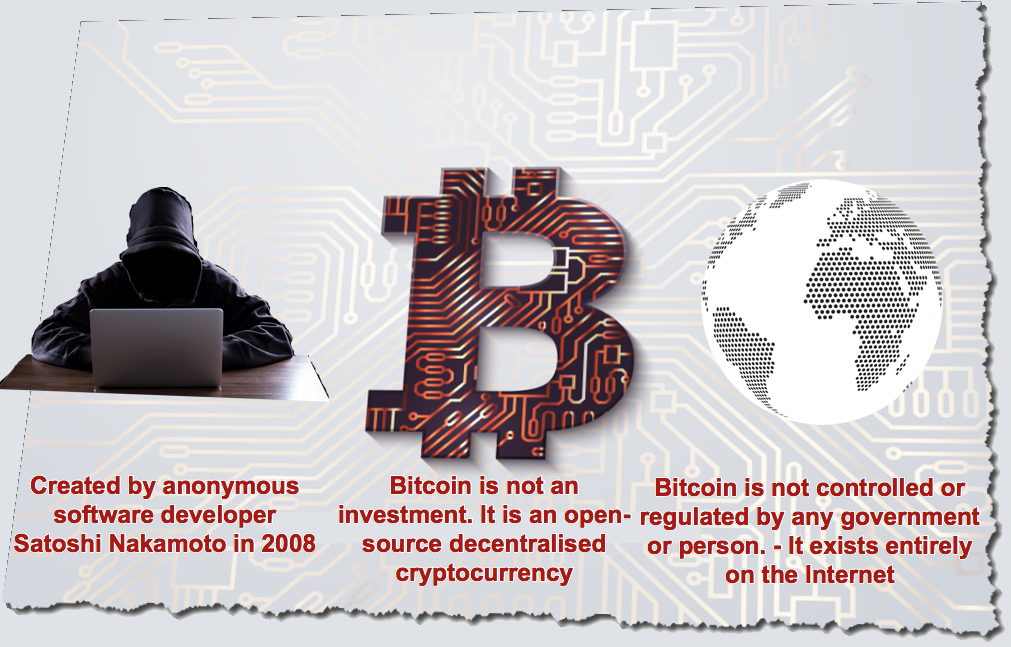The previous article to this series is Supply and Semi-anonymity of the Bitcoin
The Concept
 The concept of Bitcoin was first proposed by Satoshi Nakamoto in the year 2008. It is defined as an electronic payment system that is completely based on mathematical proof. The intention behind the creation of Bitcoin was to form a new medium of exchange independent of any centralized authority like Financial Institutions & Banks.
The concept of Bitcoin was first proposed by Satoshi Nakamoto in the year 2008. It is defined as an electronic payment system that is completely based on mathematical proof. The intention behind the creation of Bitcoin was to form a new medium of exchange independent of any centralized authority like Financial Institutions & Banks.
The most bizarre part about this is that we still don’t know who Satoshi Nakamoto is! The domain, Bitcoin.org was originally created in the year 2008 in Helsinki, Finland. The common theory which is believed by most of the crypto community is that three programmers skilled in a concept called cryptography developed the entire system of Bitcoin.
Foundations
 Behind one of the relevant patents are Neal King, Vladimir Oksman, and Charles Bry. All three of them have filed many related patents in the encryption, and network management area. All of these three potential inventors strongly deny that they were involved in the creation of Bitcoin at all, which is not a surprise.
Behind one of the relevant patents are Neal King, Vladimir Oksman, and Charles Bry. All three of them have filed many related patents in the encryption, and network management area. All of these three potential inventors strongly deny that they were involved in the creation of Bitcoin at all, which is not a surprise.
The Atlantic Wire has identified a British coder named Michael Clear as the brain behind Bitcoin and even he denies it. With nobody known as the founder of Bitcoin, this anonymity becomes one of the Bitcoin’s great strengths. There is no founder or team to throw in jail. There is no centralized institution like ‘Bitcoin Bank’ to shut down. There is no one person or team controlling the Bitcoin system and its network.

Decentralisation
 This decentralisation network is important because having a central controlling authority for a currency is a major problem. Governments, banks, hackers or general criminals can all attack and destroy that central authority. And these central authorities themselves can manipulate any number of rules and change the rates according to their benefits. Solving the problem of centralisation of currency is one of the major purposes of starting a system like Bitcoin.
This decentralisation network is important because having a central controlling authority for a currency is a major problem. Governments, banks, hackers or general criminals can all attack and destroy that central authority. And these central authorities themselves can manipulate any number of rules and change the rates according to their benefits. Solving the problem of centralisation of currency is one of the major purposes of starting a system like Bitcoin.
First Attempts
 Bitcoin is not the first-ever attempt to create an alternative currency stream. Several ideas for alternative currencies similar to Bitcoin have come and gone.Governments do not encourage alternative currencies. A successful precious metal-backed electronic currency called e-gold was banned by the government.
Bitcoin is not the first-ever attempt to create an alternative currency stream. Several ideas for alternative currencies similar to Bitcoin have come and gone.Governments do not encourage alternative currencies. A successful precious metal-backed electronic currency called e-gold was banned by the government.
The founder of e-gold, Dr Douglas Jackson, was jailed for 20+ years. Peppercorn was a code-based version of digital currency and even that failed. In 1994, ‘Digicash’ was introduced which is a digital currency created by some programmers using advanced mathematics and that failed too. What these attempts lacked was a systematic way of spreading out the currency generation process similar to what Bitcoin did.
Keys to Success
 Satoshi Nakamoto’s idea of Bitcoin is adopted across the globe now, as he was able to discover the perfect way to spread out the currency generation process and there lied his brilliance. There are other several clever moves made by Satoshi in order to make the Bitcoin system robust.
Satoshi Nakamoto’s idea of Bitcoin is adopted across the globe now, as he was able to discover the perfect way to spread out the currency generation process and there lied his brilliance. There are other several clever moves made by Satoshi in order to make the Bitcoin system robust.
Some of them are:
The mining concept
Decentralization
Irreversible transactions
Transparency
Mining allows everyone to get a piece of the pie, which is very important to create interest among people in generating more Bitcoins.
Decentralization helps in eliminating the central authority which can have the power to control currency.
Making Bitcoins operate like cash with irreversible transactions and keeping the whole system honest and transparent.
Without these implementations, the Bitcoin system could have never been this strong and effective.





